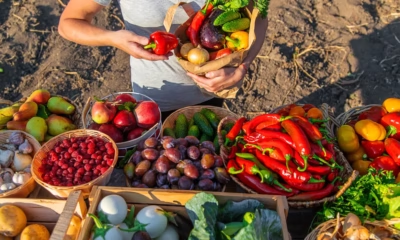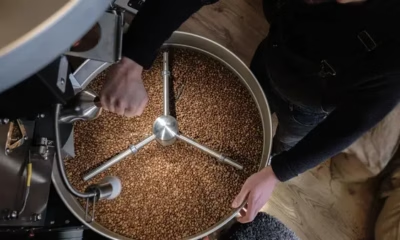Bakery
Sweet Success: Baking with Alternative Sweeteners

Baking with alternative sweeteners is a growing trend, as they provide sweetness without calories. However, achieving the perfect balance in baked goods requires careful formulation, as these sweeteners don’t always replicate the full functional properties of sugar. This challenge often involves combining multiple sweeteners and additional ingredients to address texture, color, flavor, and other key characteristics.
Key Considerations in Formulating with Alternative Sweeteners:
- Replacing Sugar’s Bulk:
- High-intensity sweeteners like stevia and monk fruit provide the necessary sweetness but lack the bulk of sugar. This requires using bulking agents such as soluble fibers, dextrose, corn syrup solids, or allulose to replace the volume sugar provides. Allulose has a unique temporal profile, closely resembling sucrose in its sweetness, and also supports browning during baking.
- Challenges with Texture, Browning, and Digestion:
- Some alternative sweeteners struggle to withstand high baking temperatures, which can result in loss of sweetness or texture issues. Additionally, alternative sweeteners may affect Maillard browning, a chemical reaction that helps create flavor and color in baked goods. They may also have different hygroscopic properties than sugar, impacting moisture retention and crumb texture.
- Using Sweeteners that Complement Each Other:
- A combination of sweeteners can often achieve the desired results. For example, stevia and allulose can be paired to reduce cost while still providing optimal sweetness. Monk fruit works well with other sweeteners, as it can help mask off-flavors, improving the overall flavor profile of the product.
- Addressing Texture and Volume:
- Sugar plays a key role in tenderizing the crumb and promoting volume in cakes and breads. When sugar is replaced or reduced, additional ingredients like clean-label instant starches (e.g., CLARIA) may be used to help restore the desired batter viscosity and texture. Enzymes can also be added to improve crumb softness and extend shelf life.
Popular Non-Nutritive Sweeteners in Baking:
- Stevia:
- Derived from the Stevia rebaudiana plant, stevia offers many sweetening components called steviol glycosides. These components can vary in flavor depending on growing conditions and extraction methods. Today’s stevia products have improved flavor profiles, with fewer bitter aftertastes, making them more suitable for a variety of baked goods.
- Monk Fruit:
- Monk fruit is another plant-derived sweetener that can withstand high temperatures, making it suitable for baking. Due to its high sweetness and low volume, it requires a bulking agent. Its high sweetening power allows it to replace sugar in baked goods effectively.
- Allulose:
- Allulose is a zero-calorie sweetener that is 70% as sweet as sugar, providing both sweetness and bulk. It also participates in Maillard browning, enhancing color and flavor. However, it tends to burn at lower temperatures, requiring adjustments in baking temperature and time.
- Erythritol:
- Erythritol is a zero-calorie bulk sweetener that is often paired with high-intensity sweeteners like stevia and monk fruit. It provides bulk and moisture and can mitigate some of the cooling effects often associated with erythritol. However, it may require additional adjustments in formulation to maintain texture.
Formulation Strategies:
- Combining Sweeteners: Combining different sweeteners, such as stevia with allulose, helps enhance sweetness while balancing cost. This strategy can provide the desired flavor profile and minimize any bitter aftertastes.
- Adding Fibers: Using soluble fibers like fructooligosaccharides (FOS) or chicory inulin can help restore the bulk and moisture sugar would provide in the batter. These fibers also act as humectants to retain moisture and prevent dryness.
- Adjusting Temperature and Leavening: Since allulose can burn at lower temperatures, reducing the baking temperature and extending baking time can ensure proper texture and browning. Adjusting leavening agents like baking powder or egg whites may also be necessary to achieve the desired fluffiness and volume.
Conclusion:
Creating delicious baked goods with alternative sweeteners involves overcoming unique challenges related to texture, volume, and functionality. By carefully combining high-intensity sweeteners, bulking agents, and fibers, formulators can achieve a balance of sweetness and functionality that replicates the qualities of traditional sugar-sweetened baked goods. With thoughtful ingredient selection and formulation, plant-based sweeteners can offer a viable solution for delicious, healthier treats.





















